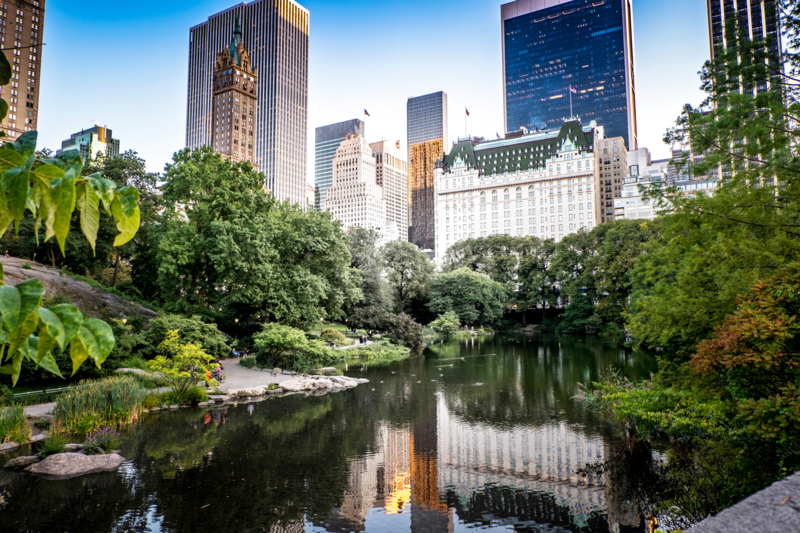Exploring the Role of Landscape Architects: Designing Outdoor Spaces for Function and Beauty

Landscape architecture is an exciting and challenging profession that involves designing and planning outdoor spaces such as parks, gardens, public areas, and residential properties. Landscape architects work with a variety of clients, including homeowners, municipalities, and commercial property owners, to create functional and aesthetically pleasing outdoor spaces. In this article, we will explore requirements, main responsibilities, additional duties, and necessary skills of a landscape architect.
History fact:
The first recorded use of the term "landscape architect" was in 1828 by Gilbert Laing Meason, a Scottish landscape architect and architectural historian.
General Information
Landscape architects are responsible for designing outdoor spaces that are functional, beautiful, and sustainable. They work closely with clients to determine their needs and preferences, and then develop plans and designs that meet those requirements. They must consider factors such as terrain, climate, water usage, and the availability of resources when creating their designs. Landscape architects may work in a variety of settings, including architecture firms, engineering firms, government agencies, or as independent consultants.
Requirements
To become a landscape architect, you typically need a bachelor's or master's degree in landscape architecture. Some states require landscape architects to be licensed, which involves passing a national exam and meeting specific education and experience requirements. In addition to formal education, landscape architects should have strong skills in design, drawing, and computer-aided design (CAD) software. They should also have a solid understanding of plant biology, environmental science, and construction techniques.
Did you know?
Some famous landscape architects include Frederick Law Olmsted, who designed Central Park and the grounds of the Biltmore Estate, and Roberto Burle Marx, who designed the landscape for the Copacabana Beach promenade in Rio de Janeiro.

Photo: frimufilms/freepik
Main Responsibilities
Designing Outdoor Spaces
Landscape architects are responsible for designing outdoor spaces that are both functional and aesthetically pleasing. They create design plans that incorporate elements such as plants, trees, hardscapes, water features, lighting, and other outdoor amenities. They take into account the unique characteristics of the site, such as its topography, soil type, climate, and existing vegetation. They also consider the intended use of the space, whether it's for recreation, relaxation, or social gatherings. The goal is to create a cohesive design that enhances the natural beauty of the site while meeting the client's specific needs. Landscape architects also consider the safety and accessibility of the space, including designing paths and walkways that are easy to navigate and meet accessibility standards.
Client Consultation
Effective communication and collaboration with clients is crucial for landscape architects. They must be able to listen to and understand the client's needs, vision, and goals for the outdoor space, as well as provide guidance and recommendations based on their expertise. This may involve conducting site visits to assess the space and discuss design options, as well as presenting design plans and making revisions based on feedback. Landscape architects must also be able to manage client expectations and provide realistic timelines and budgets for the project.
Environmental Sustainability
Landscape architects are increasingly considering environmental sustainability in their designs. They select plants and materials that are appropriate for the site's climate and soil conditions, reducing the need for excessive watering, fertilizers, or pesticides. They also design water conservation strategies, such as rainwater harvesting, greywater reuse, or permeable paving. They may also incorporate sustainable features such as green roofs or living walls to reduce the environmental impact of the project. The goal is to create a design that is not only beautiful but also environmentally responsible.
Project Management
Landscape architects are responsible for managing the entire design process, from initial consultation with the client to overseeing construction and ensuring that the project is completed on time and within budget. This requires strong organizational skills and the ability to coordinate with contractors and other professionals, such as engineers and horticulturists. Landscape architects must also be able to identify and resolve any issues that arise during the project, such as design conflicts or unforeseen site conditions, and communicate these issues to the client and other stakeholders. Effective project management also involves tracking project progress and managing project documentation, such as contracts and permits.
Landscape architecture has played a significant role in the design of important public spaces, such as the National Mall in Washington, D.C., and the grounds of the Biltmore Estate in North Carolina.
Additional Duties
- Site Analysis: Landscape architects conduct site analysis to evaluate the natural features of the site, such as topography, soil quality, and drainage. This information is used to create a design plan that is appropriate for the site's unique characteristics.
- Construction Oversight: Landscape architects oversee the construction process, ensuring that the design plan is being implemented correctly and that the final product meets their design specifications.
- Plant Selection and Maintenance: Landscape architects select plants and trees that are appropriate for the site's climate and soil conditions, and provide guidance on their care and maintenance.
- Budget Management: Landscape architects manage the project budget, ensuring that the project stays within budget and that any cost overruns are identified and addressed.
- Regulatory Compliance: Landscape architects ensure that their designs comply with all relevant regulations, including zoning laws, building codes, and environmental regulations.
Skills
To be successful as a landscape architect, it is important to have a combination of hard and soft skills. Hard skills may include knowledge of design software, construction techniques, and plant ecology. Soft skills may include strong communication and collaboration skills, as well as the ability to manage projects and work effectively under pressure.
In conclusion, landscape architects play a vital role in creating outdoor spaces that are both functional and beautiful. They have a wide range of responsibilities, from designing outdoor spaces to overseeing the construction process and managing project budgets. They work closely with their clients to understand their needs and requirements and strive to create environmentally sustainable designs that are both functional and aesthetically pleasing. To be successful in this field, landscape architects must have a combination of hard and soft skills, as well as a passion for design and the natural world.
- Landscape architects design and plan outdoor spaces such as parks, gardens, public areas, and residential properties.
- They work with clients to create functional and aesthetically pleasing outdoor spaces that are sustainable and environmentally responsible.
- A bachelor's or master's degree in landscape architecture is typically required, and some states require licensure.
- Main responsibilities include designing outdoor spaces, client consultation, environmental sustainability, and project management.
- Additional duties include site analysis, construction oversight, plant selection and maintenance, budget management, and regulatory compliance.
- Successful landscape architects have a combination of hard and soft skills, including knowledge of design software, construction techniques, plant ecology, communication, collaboration, project management, and working under pressure.
FAQ
What is a landscape architect?
A landscape architect is a professional who designs outdoor spaces, including parks, gardens, public plazas, campuses, and other types of outdoor spaces.
What education is required to become a landscape architect?
To become a licensed landscape architect in the United States, a candidate must typically complete a bachelor's or master's degree in landscape architecture from an accredited university, pass a national examination, and complete an internship or work experience requirements.
What types of projects do landscape architects work on?
Landscape architects work on a variety of projects, including public parks, private gardens, urban plazas, college campuses, and commercial developments.
What skills do landscape architects need?
Landscape architects need a variety of skills, including creativity, problem-solving, communication, and technical skills such as knowledge of design software and construction techniques.
What is the difference between a landscape architect and a landscape designer?
A landscape architect is a licensed professional who has completed a degree in landscape architecture and passed a national examination. A landscape designer may have formal education or training, but they are not licensed and typically work on smaller, less complex projects.